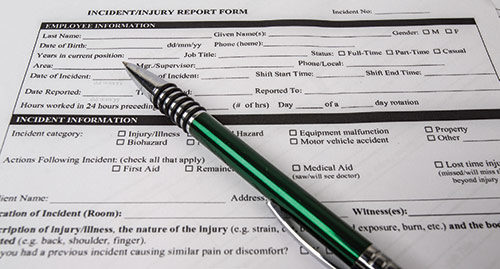Your workplace experiences an incident. Now what?
What should be the first steps in an incident investigation?

Responding is Judie Smithers, editor – workplace safety, J. J. Keller & Associates Inc., Neenah, WI.
The initial stages of an incident investigation are to report the incident, assemble an inspection team, secure the evidence and collect information. After that, the evidence is examined to identify root causes, and recommendations are formulated and implemented to prevent recurrence.
Initial report
The investigation starts with an alarm or a report, probably to the involved worker’s immediate supervisor. A hazard or incident can impact many departments in an organization, so the reporting system should include a way to inform the managers of various operations, including safety, environment, human resources, production, scheduling, maintenance, purchasing, quality assurance, etc.
Inspection team
At this point, the investigation team can be assembled. The members of the investigation team should be selected for their skills and knowledge. A variety of expertise is needed. One member may be an excellent interviewer; another can have an engineering background.
An area may still be hazardous right after an incident. It is important for everyone, including the incident inspection team, to follow the facility’s emergency action plan for rescues, evacuations and other response activities until the area is safe.
Even before the incident site is accessible, the team can start the investigation by identifying and interviewing witnesses. The team will want to interview the person who reported the hazard or incident, injured persons, witnesses, and supervisors. Interviews should take place as soon as possible while memories are fresh.
Secure the site
Next, the team secures the location of the incident and restricts entry to the area so evidence is not disturbed. They take photos, mark locations on maps, measure distances, record time sequences and collect samples for analysis.
Serious incidents can involve investigations conducted by outside agencies that need access to the site (OSHA, fire and police departments, insurance companies, etc.). The internal investigation team should cooperate with – and learn from – other investigators.
Gather evidence
The team determines anything that was not normal before the incident, where and how the abnormality occurred, when it was first noted, and whether the situation was influenced by something from outside of the immediate area. The team should compile information on:
- A description of the hazard or incident
- The incident’s location
- Maps, diagrams or blueprints
- Normal operating procedures
- A list of identified witnesses
- Events that preceded the incident
- The extent of injury or property damage
Written information to review can include procedures, instruction manuals, inspection and maintenance records, training records, job safety analyses, exposure monitoring results, medical reports, etc.
Make improvements
All incidents, regardless of the extent of injury or damage, need to be investigated. The motive behind investigating reported hazards, near misses and incidents is to identify ways to prevent a repeat of the incident – not to place blame. The goal is to change the working conditions by eliminating or reducing the factors that create unsafe conditions and behaviors.
Editor's note: This article represents the independent views of the author and should not be construed as a National Safety Council endorsement.
Post a comment to this article
Safety+Health welcomes comments that promote respectful dialogue. Please stay on topic. Comments that contain personal attacks, profanity or abusive language – or those aggressively promoting products or services – will be removed. We reserve the right to determine which comments violate our comment policy. (Anonymous comments are welcome; merely skip the “name” field in the comment box. An email address is required but will not be included with your comment.)

